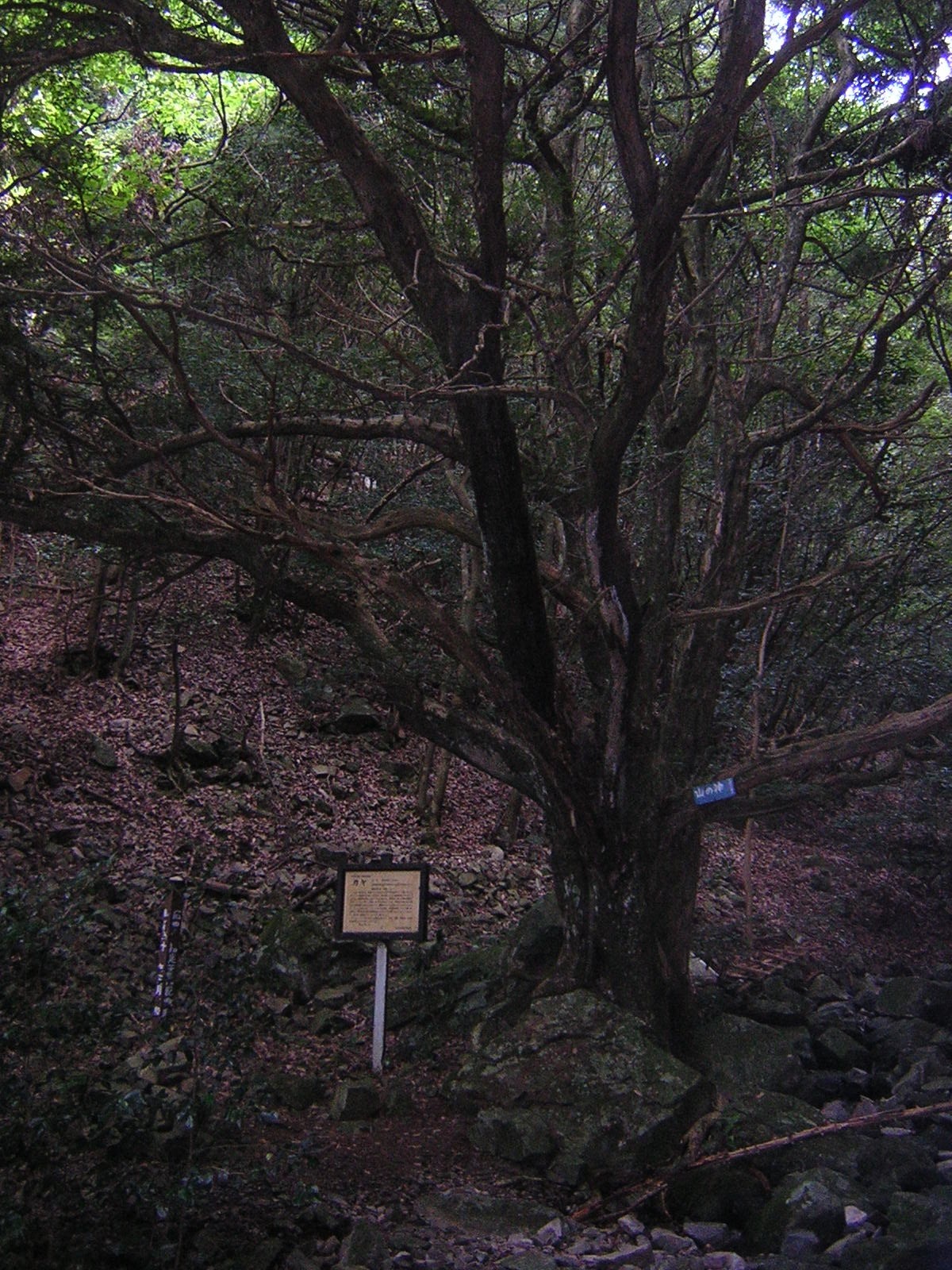The great Kaya tree is believed to have been worshiped as a yorishiro in the past.
Deep in the cypress forest that spreads across the western slope of Mt. Onigajo in Asakita Ward, there is a large Japanese kaya tree by the stream. The base of the tree is attached to a Japanese cinnamon shrub, and epiphytic plants such as camellia, vine, and wisteria can be seen on the trunk. The exact age of this tree is unknown, but it is likely quite old, as it was already listed as a large tree in the Kabe region in a report submitted to the domain in 1819. There is also a wooden plaque on the trunk that reads "God of the Mountain." This name was probably given to the tree by people who worshiped it in the past, as it was believed to be a "destination" for the god when he descended to earth. The way the tree stands strong with its roots despite being washed by the stream is truly worthy of its name. Japanese kaya is widely distributed throughout Japan, and because of its dense and beautiful texture, it is often used as a high-quality wood for shogi boards and other items. It grows very slowly, but occasionally it can reach a height of 25m and a trunk circumference of 2m at breast height. From this, it can be said that this Kaya tree is growing almost to its limit. Location: Uehara, Kabe-cho, Asakita-ku, Hiroshima City Date of designation: May 30, 1973 Summary: Tree height approx. 16m, root circumference 4.01m
INFORMATION
- business hours
- Open all year round
- address
- 〒731-0225428-2 Uehara Toryu, Kabe-cho, Asakita-ku, Hiroshima City, Hiroshima Prefecture


